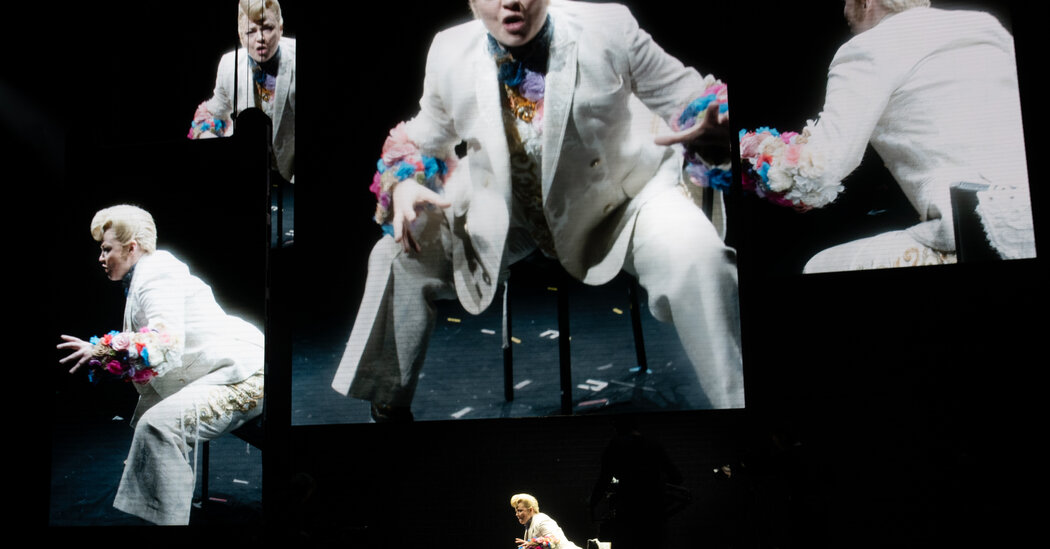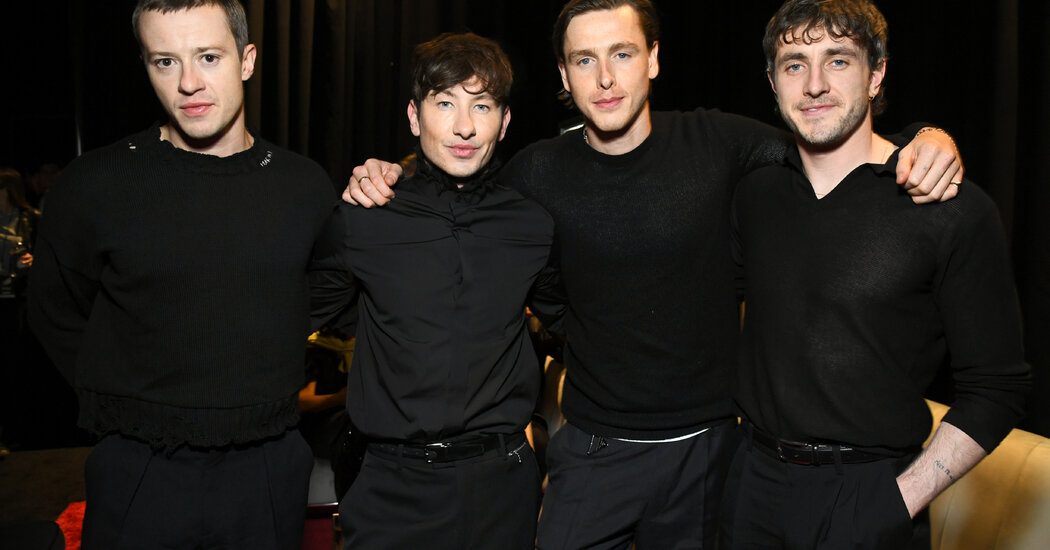The Enigmatic World of “The Picture of Dorian Gray” at the Music Box Theater
Imagine stepping into a realm where an LED screen towers over you, soaring to more than 16 feet in height. Surrounding you are four smaller screens, drifting like clouds in a vast sky, and another screen that invites you to walk upon it, offering a unique interactive experience. The scene is bustling with the energy of five camera operators, each burdened with their electronic gear, while nine dedicated individuals scurry about, managing wardrobe, wigs, and various essential props. As you take in this technological spectacle, you can’t help but notice the intricate details: three million pixels, a staggering sixteen million colors, and the occasional glitch from not one, but two cellphones on a recent night when the first one malfunctioned. And at the heart of it all is the extraordinary Sarah Snook.
In this adaptation of Oscar Wilde’s classic tale, titled “The Picture of Dorian Gray,” Snook takes on the monumental challenge of portraying 26 distinct roles, weaving a narrative that is as multifaceted as it is captivating. However, it’s important to note that the essence of Wilde’s original story, while present, has undergone significant transformation.
Wilde’s story, first published as a magazine piece in 1890 and later novelized in 1891, has attracted countless adaptations over the years, largely due to its intriguing plot device: a portrait that ages in place of its subject. As the stunning Dorian Gray succumbs to the decadent influences of Lord Henry Wotton, the painting created by Basil Hallward becomes increasingly grotesque, mirroring Dorian’s moral decline.
Yet, to adapt this narrative successfully, many elements of Wilde’s work must be reimagined or omitted entirely. What Wilde crafted was not merely a psychological thriller; it was a rich, perfumed exploration of aesthetic philosophy. Furthermore, the underlying themes of homosexuality, though often minimized, are complex and deeply woven into the fabric of the story. Wilde himself faced persecution for these themes, being convicted of “gross indecency” in 1895, which led to a two-year prison sentence and ultimately contributed to his untimely death at the age of 46 in 1900. His work, including “Dorian Gray,” served as part of the evidence against him.
Much like the classic 1945 MGM film adaptation, the current version, skillfully penned and directed by Kip Williams, tends to downplay the philosophical aspects of the original tale. However, the queerness of the narrative is presented with honesty and complexity, especially considering that Snook, an Emmy-winning actress renowned for her role in “Succession,” navigates the intricacies of portraying a male character while remaining a woman herself. In this adaptation, her portrayal of Dorian Gray is less the idealized 20-year-old from the novel and more akin to an innocent, barely pubescent boy.
Snook’s performance is marked by a remarkable specificity for each character she embodies. Her portrayal of Lord Henry Wotton exudes a captivating slouchy physicality, while her Basil Hallward is portrayed with a nervous energy that captivates the audience. Dorian, as depicted by Snook, beams with a youthful exuberance that draws viewers into the heart of this tumultuous narrative.




